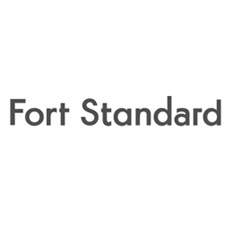查看完整案例


收藏

下载

翻译
The new Congo Kintele Congress Centre is built in a newly developing area of Brazzaville, to the north of the new Olympic Centre. The site has panoramic views of the Congo River to the south and a forested unbuilt landscape to the north. The topography of the site is a valley carved out by the great Congo River which creates M’Bamaou island in the foreground and the buildings sit parallel to the contours of this valley sloping down to the river.
The positioning of the buildings on the site is largely dictated by this topography, where we were concerned with minimising the excavation and removal of earth from the site. Bigger masses requiring larger functional areas such as the 1500 seat Congress Hall, the 300 people Presidential Hall, the 1000 seat Banquet Hall and the 1000 people Public Piazza were placed in a linear sequence interrupted by courtyards. These are all reached by a public sheltered colonnade that links these elements. All but two courtyards linking the enclosed volumes are accessible to the public, and allow us to form landscaped intermissions amongst the large masses of these functions. Thus, the Congress Hotel settles in to the landscape, avoiding the appearance of an overbearing mass of buildings while providing views of the Congo River from all its rooms.
The 350-meter-long colonnade also acts as a linear public space, sheltering people from the ever-present rains that prevail most of the year around. The two ends of the colonnade also act as public gates to the whole complex. Attached to this public colonnade are the Press Hall to the Western gate and the Museum to the Eastern gate. At this end, the Museum forms the southern edge of the Piazza, while the shops and the public restaurant form the Northern and Eastern edges of the Piazza. This open space is also sheltered from the rain with a square oculus that allows the rain to fall in to a shallow pool at its centre.
The omnipresent rainy climate of Congo defines the way people interact with public spaces. A great effort was made in this sense to shelter people in the open spaces of the congress centre while keeping their attachment to nature. It is important to shelter from the rain while allowing air to flow and cool such sheltered spaces in the humid climate. So, these sheltered areas are designed to let the air flow thru them. The presence of water is also visually and audibly celebrated by letting it fall from the roofs and reach the earth to fill open pools using gargoyles and waterfalls.
The constant presence of a high level of humidity makes it impractical to use natural ventilation in large covered public spaces so mechanical air conditioning of such public spaces is essential to achieve acceptable comfort standards. Our main objective, in this case, is to minimise the cooling loads by reducing the incidence of sunlight on exposed glass facades. Thus, glazing is always deeply set into the façade on the north and low sunlight from the east and west is moderated by vertical shading elements and perforated metal screens.
The 200-bedroom resort hotel also acts as an adjunct to the Congo Kintele Congress Centre, providing accommodation and leisure facilities for some of the presidential guests and their entourage with a series of suites and standard rooms. For privacy reasons, the spa, restaurant, bars and the pool that are located on the ground floor of the hotel, are elevated 5 metres above the level of the Congress Centre and with this elevated positioning, they benefit from the panoramic views across the Congo Valley.
Pedestrian path leading from the hotel pool to the major event courtyard below also serves as an extension of the Public Piazza, which links again to the main colonnade running in the east west direction.
The use of materials in the Congress Centre and the Hotel was dictated by the speed of construction and availability of modern construction and cladding materials in the Congo Republic. Although it would be more cost effective to use concrete frames, steel was used for this reason. Instead of massive cladding elements such as block or brick, lighter and easily transportable cladding materials such as aluminium panelling were preferred. Beyond these limitations, use natural materials such as timber and stone was favoured.
The larger cladding elements on the facade are perforated with geometric Congolese patterns, to reflect the culture and traditions of the larger region and to create a link between the Kintele Congress Hotel and its location. These patterns are repeated on the floors and dividing screens of the interior spaces as well as on the external wall elements to provide shade and privacy. Vertical shading elements have a lighter coloured bronze/brass finish which is set against a background of larger, darker coloured panels and glass. The overall colour palette of the project is derived from a series of light and dark shades of bronze and brass.
Year 2015
Work started in 2014
Work finished in 2015
Client The Republic of Congo
Contractor SUMMA Tourism Investments
Status Completed works
Type Public Squares / multi-purpose civic centres / Hotel/Resorts / Interior Design







































